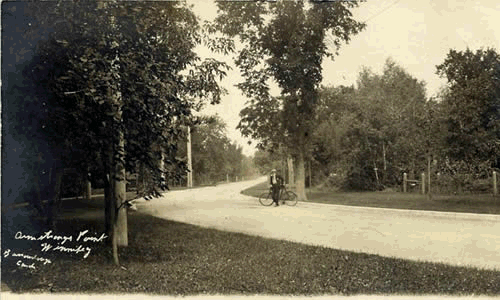The History of Armstrong's Point
Historic Armstrong’s Point received its name in the mid-1800s, when the land was first granted by the Hudson’s Bay Company to Captain Joseph Hill.
When Captain Hill returned to England five years later, he left his batman James Armstrong in charge and the area gradually came to be known as Armstrong’s Point. In the early 1880s when Hill heard that land values were escalating in the Canadian west, he returned to Winnipeg, re-established his title to his property, and sold it to a syndicate headed by J. McDonald and E. Rothwell.
The Armstrong’s Point Association was formed in 1955 to “preserve the residential nature” of one of Winnipeg’s most cherished neighbourhoods. Over the years, residents have come and gone, but still somehow, this peaceful, naturally beautiful setting remains, cherished by all who live here and visit here.
Of the 123 homes on the Point, 73 are listed by the City of Winnipeg as Historically Noteworthy. The ornamental Tyndall stone gates were erected in 1902 and were designated by the City as historically significant in 1993.
The Cornish Library, a Carnegie library built in 1915, was named after Winnipeg’s first mayor, Francis Cornish. Its historical value was recognized by the City in 1992. Ralph Connor House, home to the University Women’s Club at 54 West Gate, has been designated municipally and provincially and was named a National Historic Site. The House is named for Ralph Connor, the pen name of Reverend Charles W. Gordon, a prolific and popular writer who gained international acclaim for best-selling novels but was also a Presbyterian minister and one of the founders of the United Church of Canada.
"After years of effort, Armstrong’s Point was named in April of 2019 as Winnipeg’s first Heritage Conservation District “ |

